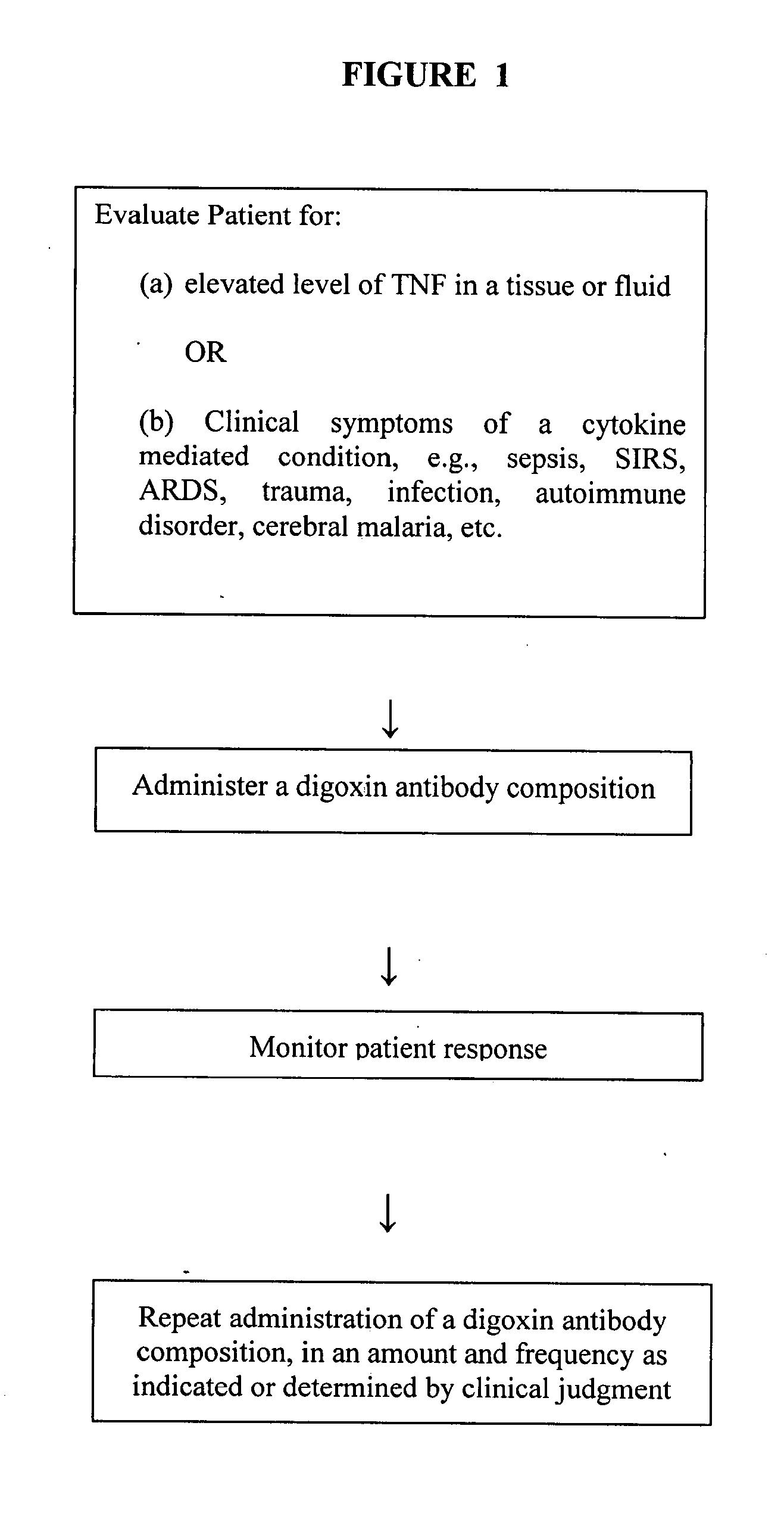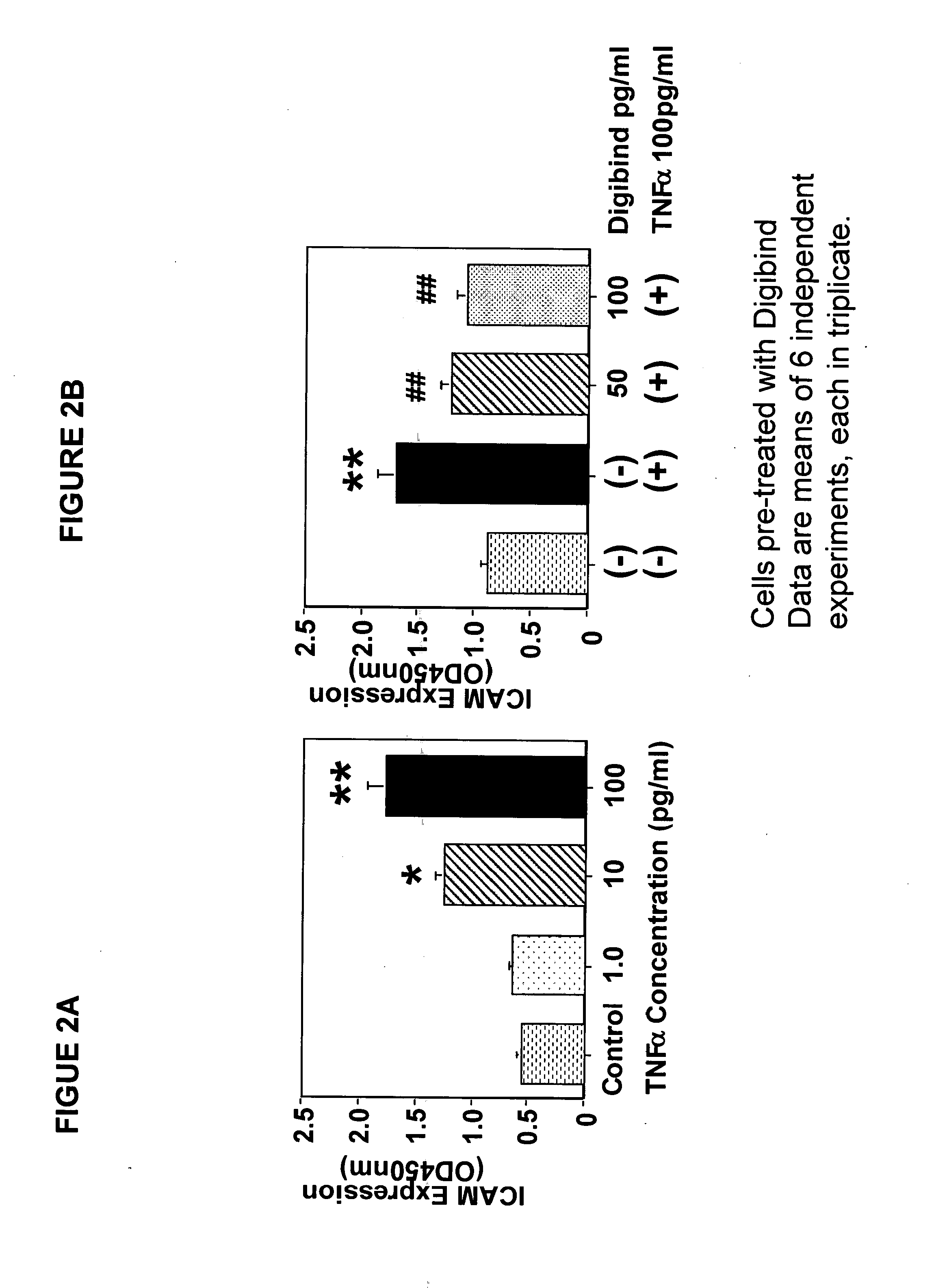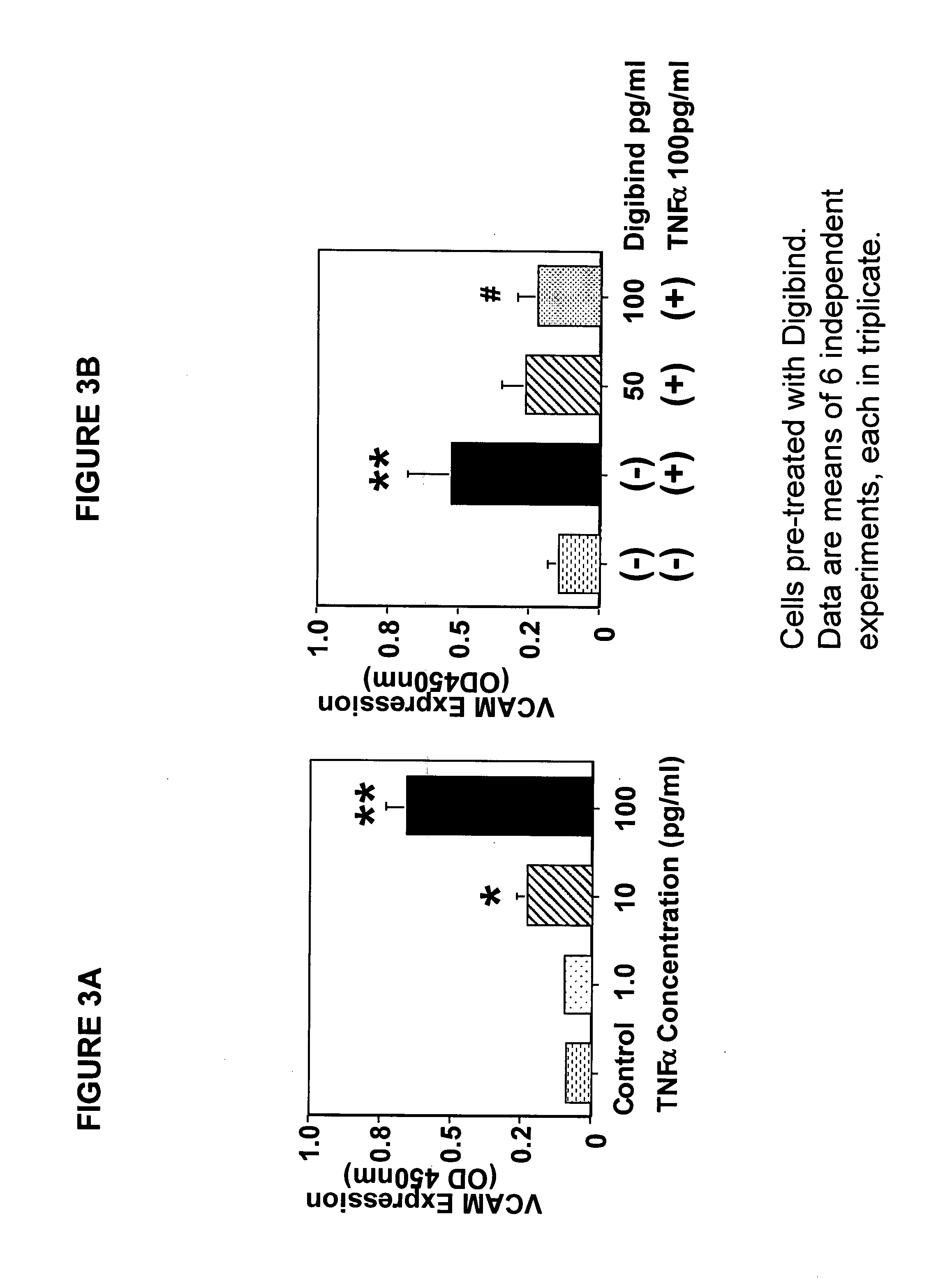Composition for modulating the expression of cell adhesion molecules
a cell adhesion and cell technology, applied in the field of immunology and medicine, can solve the problems of edema, hypotension persisting, net loss of blood plasma into the tissue, etc., and achieve the effects of restoring the balance of the cellular response, reducing the risk of certain infections, and reducing side effects
- Summary
- Abstract
- Description
- Claims
- Application Information
AI Technical Summary
Benefits of technology
Problems solved by technology
Method used
Image
Examples
biological example # 1
Biological Example #1
[0175]Endothelial cells (ECs) were isolated from umbilical cord vein from normal pregnant deliveries and cultured as described in Wang Y, Yang G and Lucas M J, Expression of Thrombin Receptors in Endothelial Cells and Neutrophils from Normal and Preeclamptic Pregnancies, J. Clin. Endocrin. & Met. 87(8):3728-3724 (2002). Confluent ECs were grown in 48 well / cluster cell culture plates and treated with TNF-α at concentrations of 1, 10, and 100 pg / ml for 2 hours (TNF-α concentration is in a range of 50-100 pg / ml in sepsis). EC activation was determined by immunoassay directly to detect EC surface expression of adhesion molecules ICAM, VCAM, and E-selectin. Data are expressed as mean±S.D. and analyzed by ANOVA. Student-Newman-Keuls' test was used as post-hoc test. A “P” level of less than 0.05 was deemed to be statistically significant. FIGS. 2A, 3A and 4A illustrate the increasing, dose-dependent TNF-α induction of cell surface expression of ICAM, VCAM and E-selecti...
PUM
| Property | Measurement | Unit |
|---|---|---|
| temperature | aaaaa | aaaaa |
| temperature | aaaaa | aaaaa |
| blood pressure | aaaaa | aaaaa |
Abstract
Description
Claims
Application Information
 Login to View More
Login to View More - R&D
- Intellectual Property
- Life Sciences
- Materials
- Tech Scout
- Unparalleled Data Quality
- Higher Quality Content
- 60% Fewer Hallucinations
Browse by: Latest US Patents, China's latest patents, Technical Efficacy Thesaurus, Application Domain, Technology Topic, Popular Technical Reports.
© 2025 PatSnap. All rights reserved.Legal|Privacy policy|Modern Slavery Act Transparency Statement|Sitemap|About US| Contact US: help@patsnap.com



